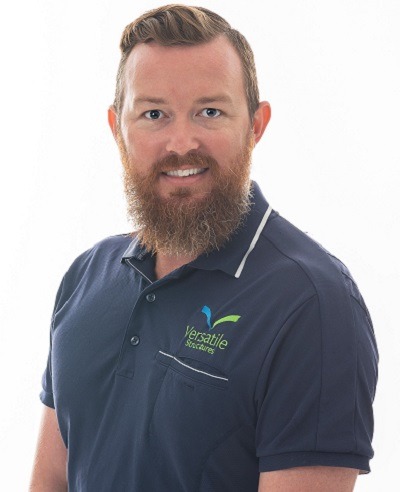YOU ARE HERE:

Maximizing Outdoor Comfort with Shade Structures in South East Queensland
Jamie Howard In Shade Structure
In South East Queensland, known for its beautiful weather and abundant sunshine, outdoor spaces are an essential part of life. However, the region’s hot summers and intense UV radiation can make these areas uncomfortable, limiting their usability. To combat this, businesses, property developers, and even local councils are increasingly investing in shade structures to enhance comfort and make outdoor areas more functional year-round.
Shade structures are no longer just a luxury; they are a necessity for creating comfortable, usable spaces in commercial settings, parks, and public areas. Whether it’s providing protection for patrons in an outdoor café or creating a cooler environment for a playground, shade structures improve both the functionality and appeal of outdoor spaces. In South East Queensland, they have become indispensable tools for maximizing the use of outdoor areas.
The Growing Importance of Shade Structures in South East Queensland
With an average of over 260 sunny days each year, South East Queensland’s climate provides ample opportunity to enjoy the outdoors. However, extended exposure to the sun can cause discomfort, health risks, and even damage to property. Businesses, particularly in the hospitality, retail, and tourism sectors, are recognizing the value of shade structures as essential components for making outdoor spaces comfortable and attractive.
Outdoor dining areas, retail plazas, playgrounds, and public parks benefit significantly from well-designed shade structures. Not only do they offer protection from harmful UV rays, but they also make outdoor spaces cooler and more pleasant, encouraging people to linger longer. For businesses, this translates into increased foot traffic, higher sales, and improved customer satisfaction.
Enhancing Usability and Comfort
One of the primary reasons for installing shade structures is to enhance comfort in outdoor areas. By blocking direct sunlight and reducing temperatures beneath them, these structures create inviting environments that people can enjoy for longer periods. For example, cafés with shaded outdoor seating attract more customers during the hotter months, while parks with shaded areas provide respite for families and children.
In South East Queensland, where high temperatures can reach over 30°C in summer, shade structures can lower the temperature underneath them by as much as 10°C. This significant reduction in temperature makes a huge difference in user experience, transforming otherwise uncomfortable areas into desirable spaces. The comfort provided by shade structures is particularly important in commercial settings, where businesses need to maximize the usability of outdoor areas to cater to their clientele.
Aluminium Sunhoods: A Sleek and Functional Solution
For businesses and property owners looking for a sleek, modern, and low-maintenance solution, aluminium sunhoods are a popular choice. These stylish shade solutions are typically installed over windows or doorways to provide shade and reduce the amount of direct sunlight that enters a building. Aluminium sunhoods not only help to reduce indoor heat, which in turn lowers cooling costs, but they also enhance the aesthetic appeal of a building.
In commercial spaces, aluminium sunhoods are often used to create a sophisticated look while ensuring functional shading. They are resistant to corrosion, making them ideal for the humid climate of South East Queensland. Additionally, they require minimal maintenance, which is a major advantage for businesses that need long-lasting, hassle-free solutions.
The Impact of Shade Structures on Public Health
Shade structures do more than just enhance comfort; they also play a critical role in protecting public health. South East Queensland has one of the highest rates of skin cancer in the world, and prolonged exposure to the sun’s harmful UV rays is a major contributor. Shade structures offer a simple yet effective way to mitigate this risk by providing much-needed protection from the sun.
In public spaces like parks and playgrounds, shade structures can significantly reduce the amount of UV radiation that people are exposed to. This is particularly important for children, who are often more vulnerable to the harmful effects of the sun. By installing shade structures in these areas, local governments and developers are taking proactive steps to protect public health.
Additionally, shade structures contribute to the overall well-being of the community by creating cooler, more pleasant environments where people can gather and socialize. Whether it’s an outdoor event, a playground visit, or simply spending time in a park, shaded areas provide a comfortable and safe space for people to enjoy outdoor activities without the risk of overheating or sunburn.
Exploring Various Fabrics for Shade Structures
The choice of fabric is a crucial factor when designing a shade structure, as it determines the amount of sunlight blocked, the structure’s durability, and its overall appearance. Several fabric options are commonly used in shade structures, each with its own advantages.
- Polyethylene (PE) Fabric:
Polyethylene is a durable and cost-effective material commonly used in shade sails and canopies. It is lightweight, easy to install, and offers excellent UV protection, making it ideal for outdoor areas in commercial and residential settings. Its high resistance to wear and tear also makes it a suitable option for areas exposed to strong winds or harsh weather conditions. - Polyvinyl Chloride (PVC) Fabric:
PVC fabrics are known for their superior strength and durability. They offer excellent UV resistance, are waterproof, and are easy to clean. PVC is often used in more permanent shade structures where longevity is critical. This fabric is ideal for environments that experience high winds, heavy rain, or intense sun exposure, such as coastal regions or commercial spaces in South East Queensland. - Acrylic Fabric:
Acrylic fabrics are often chosen for their vibrant colours and high resistance to fading. These fabrics provide a soft, stylish look and are ideal for shading outdoor dining areas or patios. Acrylic fabrics offer moderate UV protection and are mould-resistant, making them suitable for humid climates. - Mesh Fabrics:
Mesh fabrics allow for better airflow, reducing heat buildup while still providing ample shade. These fabrics are especially popular for car park shade structures, as they offer protection from the sun while keeping the space cooler by allowing ventilation. Mesh fabrics are also durable and can withstand the high winds and heavy rains typical of South East Queensland.
The type of fabric selected for a shade structure depends on the specific needs of the space, such as the level of UV protection required, the aesthetics, and the expected weather conditions. In South East Queensland, where extreme heat and high UV levels are common, choosing a fabric that offers robust protection and durability is essential.
Conclusion
As South East Queensland continues to grow and develop, the importance of well-designed shade structures in commercial spaces and public areas is becoming increasingly clear. These structures not only enhance the usability and comfort of outdoor spaces but also play a vital role in protecting public health by providing essential shade from the sun’s harmful UV rays.
From aluminium sunhoods that add a modern touch to buildings, to the wide variety of fabrics that offer different levels of protection and durability, shade structures are versatile solutions that can meet the unique needs of any space. As businesses and public planners continue to invest in these structures, they are creating more inviting, functional, and safer environments for everyone to enjoy.
Share:
Jamie Howard - Director
Co-founder and Director Jamie has been hands-on in the shade and steel industry since leaving school. With over 15 years’ experience in shade, membrane and steel projects, Jamie is excited about the design opportunities shade structures offer in the commercial and industrial sectors. Jamie’s extensive design skills give him a competitive edge in situations with technical design complexity. He has won two personal industry awards for his designs, alongside many company-won awards.

